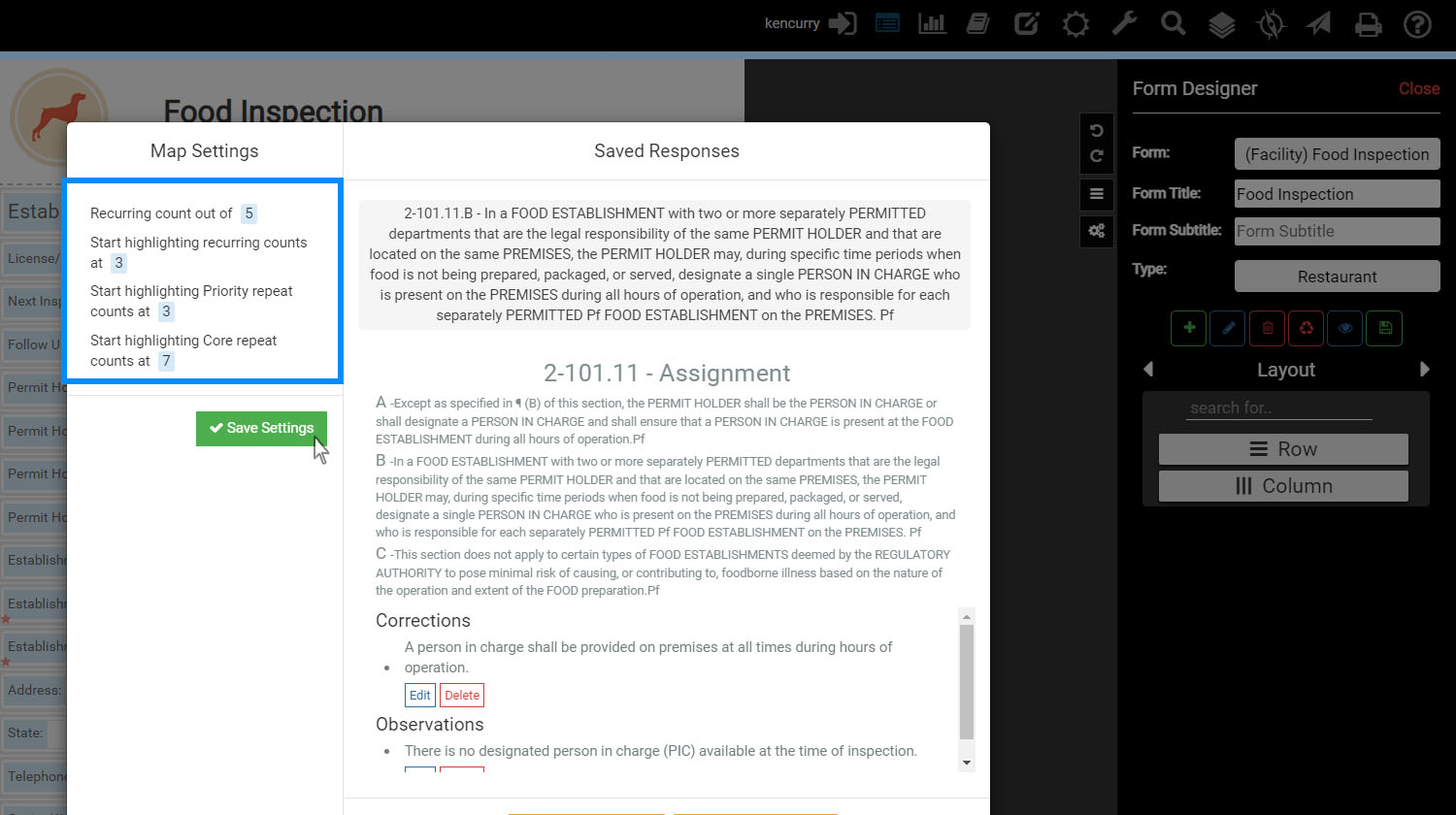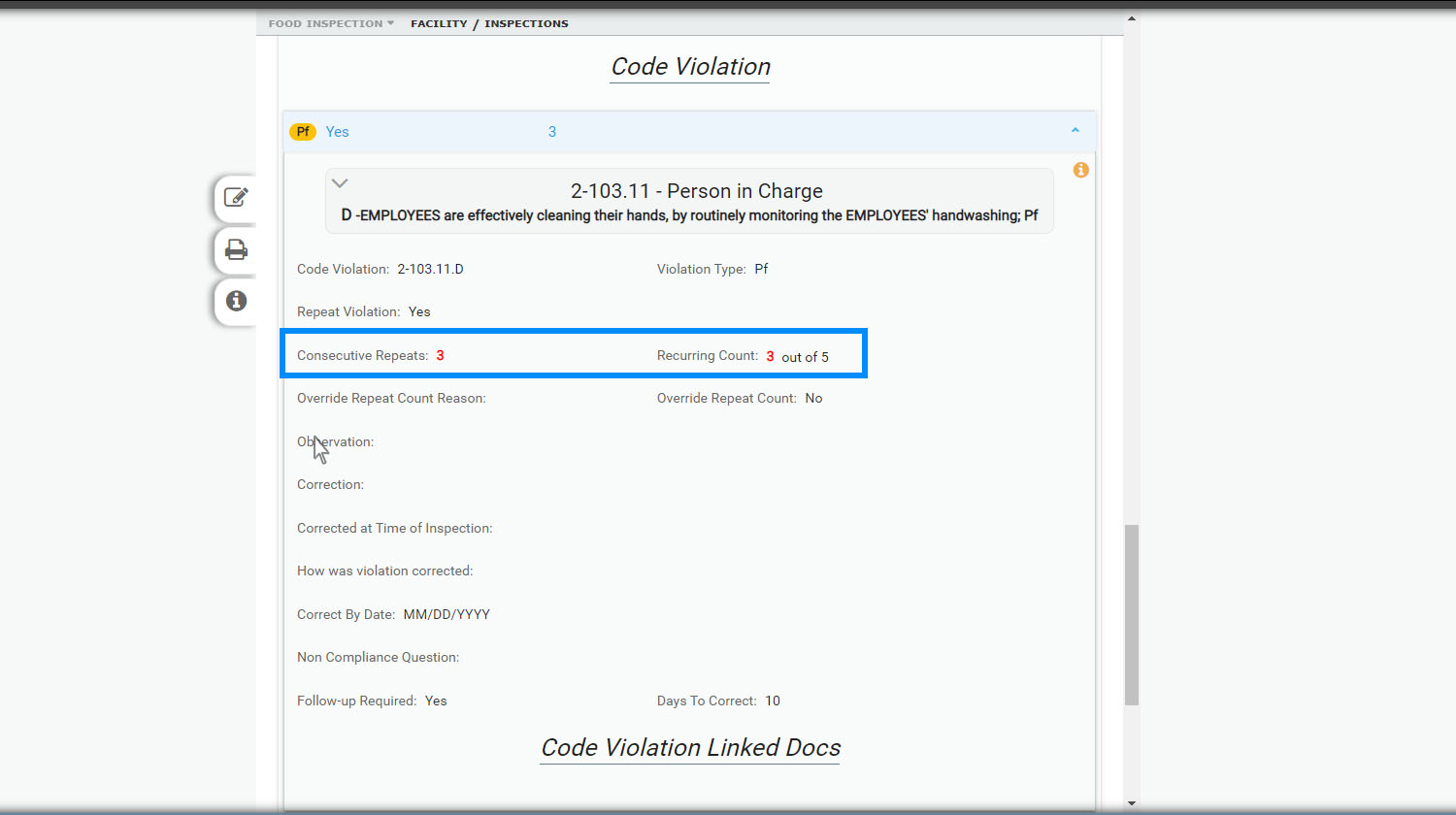EH Bellman
Location, data and EH. A better way forward.
EH Bellman - September.16.2021
Tracking Repeat & Recurring Food Violations
Tracking repeat and recurring violations is a critical part of food safety programs. These number of either repeat or recurring violations typically have a threshold that when crossed, initiate further action to mitigate an issue at a food establishment. The problem is that tracking repeat or recurring counts is often done manually by reviewing prior inspections. Complicating the manual review is the idea that many health departments use different repeat/recurring counts based on the violation type. For example, a Priority (Critical) may have a repeat count of three, while a Core (Non-Critical) violation may be five.
When we developed the new Food Safety module for FetchEH one of our focal points was to introduce automation as a means of improving workflow efficiency and data quality. Part of our automation ambition was to make it easier to track repeat and recurring violations. This meant giving EH professionals the power to set their own thresholds for both repeat and recurring violations, including setting these thresholds for different violation types (Priority/Core or Critical/Non-Critical).
Defining Thresholds for Violations
Tracking repeat and recurring violations in FetchEH starts with setting the corresponding thresholds or counts. For the recurring count, the tracking looks at the number of times a violation occurs over some number of inspections. So, a user could set the number of inspections to be five and the recurring count to be three. In this example if a violation occurs three times over five inspections the threshold is crossed.
Repeat violations are easier because they only consider back-to-back inspections. For repeat counts, the tracking simply looks at the number of times a violation occurs over successive inspections. Here, a user sets the number of times a violation can be repeated, which represents the threshold for further action. In this example, if the repeat count is three and a violation occurs over three inspections in a row, the threshold is met.

Defining Repeat & Recurring violation counts
Managing Different Violation Counts
The other consideration that made automation in this circumstance more interesting is the fact that violation types (Priority, Core or Critical/Non-Critical) often have different thresholds. This is especially true with repeat violations. To manage this, we provide an additional option to set repeat violation counts for both Priority and Core violations. So, a Priority violation may be set to three (3) repeats, while Core violations can be something different. This gives the user complete control when managing thresholds for repeat and recurring violations, including modifying the counts whenever needed.
Flags During a Food Inspection
On the form side, where the data entry for a violation takes place, any repeat or recurring violation that meets the threshold count is highlighted. The best part is that the counts are generated dynamically and displayed in fields on the form. So, the inspector is always aware of the repeat or recurring count for the violation cited and when that count crosses the defined threshold.

Flagging when a Repeat or Recurring threshold is met
Using the software to track repeat and recurring violations makes it easier to identify problems during an inspection, while also removing the need to manually count violations. This is complimented by Insights tools that enable reports to be generated, including identifying establishments that are close to either repeat or recurring thresholds. Ultimately, the use of automation helps improve data quality and reduces that chance that a problem persists longer than it should.
More Posts